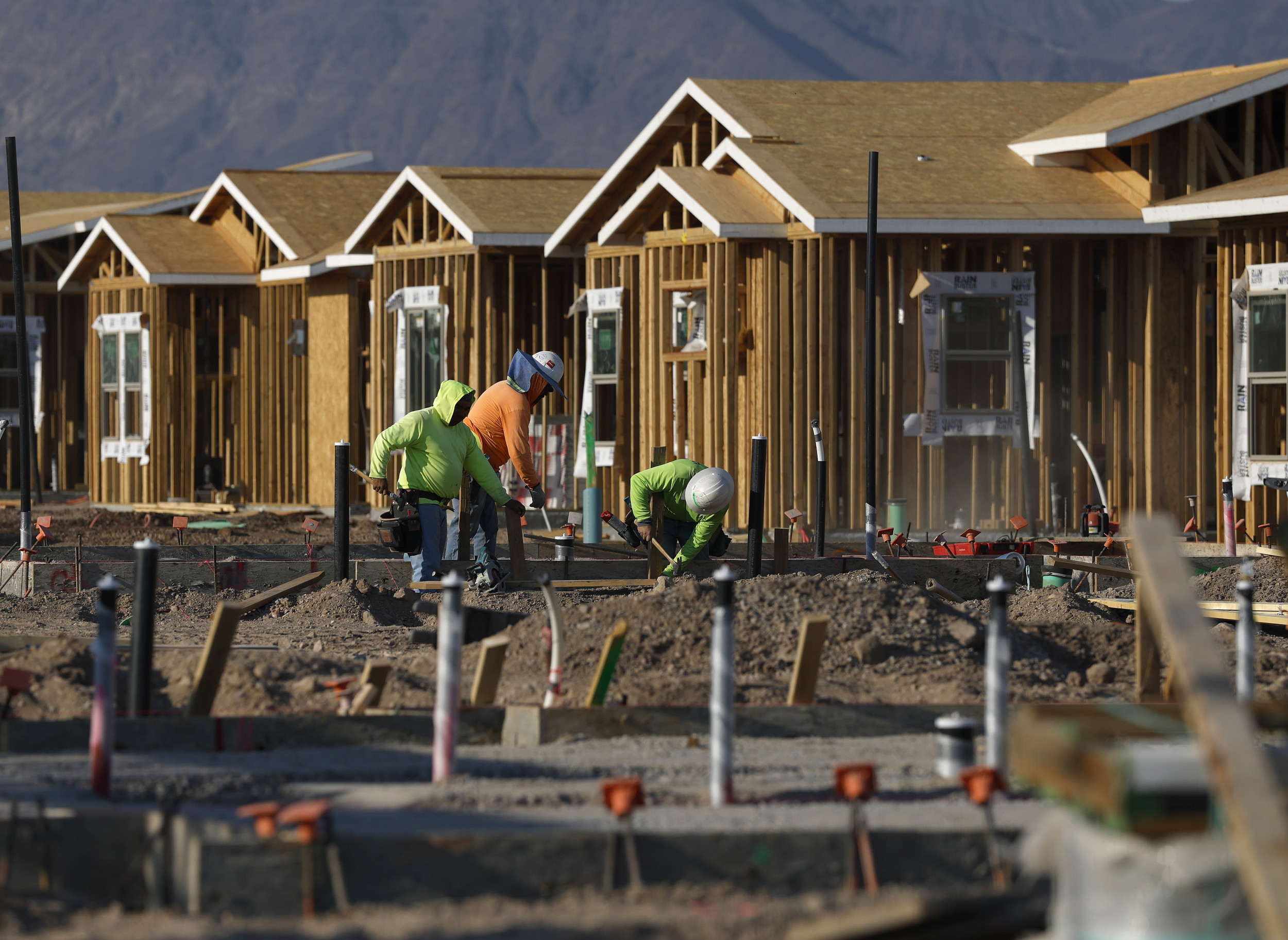
The sharp about-turn in immigration levels since January looks set to have an impact on the U.S. housing market — particularly when it comes to rentals — though its wider effects could take longer to be felt.
New analysis from economic and housing experts shows that the surge in demand for housing seen over the past four years is easing slightly, as fewer immigrants arrive in the U.S., and President Donald Trump’s mass deportation plan is put into action.
“The big thing that had happened the past few years is we saw a huge burst in immigration on a net basis into the United States, much of that through the southern border,” Lance Lambert, founder of the housing-market research site Resi Club, told Newsweek.
“So, what that did to the housing market is it created more demand, rental demand in particular, at the bottom of the market.”
Lambert said the markets that will see the biggest impact of lower migration numbers will be those metropolitan areas which saw high numbers of legal and illegal new arrivals in recent years, such as New York City, Miami and Houston. These cities have seen demand for housing surge, with data regularly showing soaring rental costs and a lack of available units.
In Manhattan, rents steadily climbed after a pandemic-era low to a median asking price of $4,745 in July, with a total rental inventory of 18,936 units, compared to 21,317 the year before, per StreetEasy. Not all of this would have been driven by immigration, but it was likely a contributing factor in the city’s ever-present housing shortage.
Miami saw similar surges in costs, despite an ever-expanding metropolitan area, as Florida’s immigrant population grew.
Migrants Blamed for Housing Squeeze
During the 2024 presidential election campaign, Vice President JD Vance was among those on the right who put the blame for America’s housing squeeze squarely on immigrants.
In a speech at the Republican National Convention last July, the then-VP nominee spoke about U.S. homebuilders that went out of business during the financial crisis of 2008, putting a dent in new-home construction that has continued.
“Then the Democrats flooded this country with millions of illegal aliens,” Vance said. “So citizens had to compete with people who shouldn’t even be here for precious housing.”
This messaging was one of the factors driving support for mass deportations and other stricter immigration measures.
Since President Trump and Vice President Vance took office, there has been a noticeable shift in immigration patterns. Stan Veuger, a senior fellow at the center-right American Enterprise Institute (AEI), told Newsweek that net migration was likely to dramatically fall in 2025, potentially by as much as 650,000.
“That’s mostly driven by a reduction in flows both at the southern border, but also various legal pathways that have been cut off or reduced, including the Refugee Resettlement Program and humanitarian programs for Cubans, Haitians, Nicaraguans, Venezuelans, Ukrainians, and Afghans,” Veuger said. “So that, in turn, will have an impact on various macro-outcomes.”
The Impact of Trump 2.0 Policies
Veuger and his colleagues predict that GDP growth will be reduced by 0.3 to 0.4 percentage points this year, partly because of the reduction in migrants leading to a loss of in employees in sectors like construction.
In the months leading up to and following the 2024 election, others also made similar predictions, warning that a loss of immigrants, both legal and illegal, would have a drastic effect on the U.S. economy.
When it comes to housing, those impacts may not be felt just yet, Lambert told Newsweek, with the market not necessarily reflecting the drop in net migration or the effects of tariffs on building materials.
“At the moment, builders are not seeing any meaningful increases in material cost nor labor cost,” said Lambert, of Resi Club. “If we potentially see a long sustaining pullback in immigration through the border, could that over time create some tightening impact to the labor market and the residential construction sector? Yeah, potentially.
He added: “But at the end of the day, right now, the bigger macro features of the housing cycle are playing a much bigger role to builders.”
Justin Sullivan/Getty Images
Lambert pointed to an overall slowdown in the housing market since the pandemic, including affordability issues, a rising number of available units sitting for longer and a drop in demand as the real issues facing housing rather than immigration policies.
“Keep in mind that immigration essentially had a pull-forward where there was more immigration the past few years than would have otherwise occurred,” Lambert said. “So even with a pullback or a net decline in immigration this year, we still have more people who immigrated the past few years than the trend expected.
“So it would take several years of very little immigration through the southern border or even net declines to fully smooth out that big burst that we saw in 2023-2024.”
Veuger said that AEI is predicting a dramatic slowdown in migration numbers over the next two years, which could impact the economy more widely, but those levels could return to normal soon after depending on federal policy and who wins the White House in 2028 — meaning only time will tell how big an impact the administration’s policies will have on long-term housing and construction.
“Part of what drives the very low net migration number now is that there are millions and millions of people in the country who arrived relatively recently,” Veuger said. “If you are a recent arrival, you’re much more likely to leave, either voluntarily or through extradited removal.
“Two, three years from now, after we will have had a number of years with many fewer arrivals, we will have fewer recent arrivals who are so likely to leave.”
